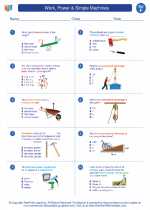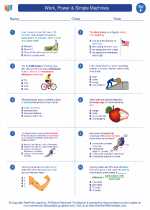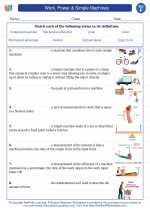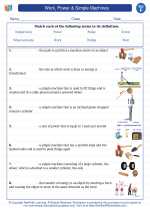Rotation in Science
Rotation is the spinning of an object around its axis. This concept is important in science, particularly in the fields of physics and astronomy. Understanding rotation can help us comprehend various phenomena such as the movement of celestial bodies, the behavior of machinery, and the dynamics of the Earth's rotation.
Key Concepts:
- Axis: The imaginary line around which an object rotates.
- Angular Velocity: The rate at which an object rotates around its axis, typically measured in degrees per unit of time.
- Rotation Period: The time it takes for an object to complete one full rotation around its axis.
- Centripetal Force: The force that keeps an object moving in a circular path, directed toward the center of rotation.
Examples of Rotation:
Examples of rotation include the Earth's daily rotation on its axis, the spinning of a wheel, and the rotation of a spinning top or gyroscope.
Study Guide:
- Define rotation and provide an example of a rotating object.
- Explain the concept of an axis and how it relates to rotation.
- Discuss the difference between angular velocity and rotation period.
- Describe the role of centripetal force in maintaining rotation.
- Compare and contrast the rotation of celestial bodies (e.g., Earth, planets, stars) with the rotation of everyday objects.
- Illustrate a real-life scenario where an understanding of rotation is crucial (e.g., engineering, sports, astronomy).
By mastering the concept of rotation, you will gain insights into the fundamental principles governing motion and dynamics in the natural world and beyond.
[Rotation] Related Worksheets and Study Guides:
.◂Science Worksheets and Study Guides Sixth Grade. Work, Power & Simple Machines
Worksheet/Answer key Work, Power & Simple Machines
Work, Power & Simple Machines  Worksheet/Answer key
Worksheet/Answer key Work, Power & Simple Machines
Work, Power & Simple Machines  Worksheet/Answer key
Worksheet/Answer key Work, Power & Simple Machines
Work, Power & Simple Machines  Vocabulary/Answer key
Vocabulary/Answer key Work, Power & Simple Machines
Work, Power & Simple Machines  Vocabulary/Answer key
Vocabulary/Answer key Work, Power & Simple Machines
Work, Power & Simple Machines 

 Worksheet/Answer key
Worksheet/Answer key
 Worksheet/Answer key
Worksheet/Answer key
 Vocabulary/Answer key
Vocabulary/Answer key
 Vocabulary/Answer key
Vocabulary/Answer key

The resources above cover the following skills:
Reading Standards for Literacy in Science and Technical Subjects
Craft and Structure
Determine the meaning of symbols, key terms, and other domain-specific words and phrases as they are used in a specific scientific or technical context relevant to grades 6-8 texts and topics.